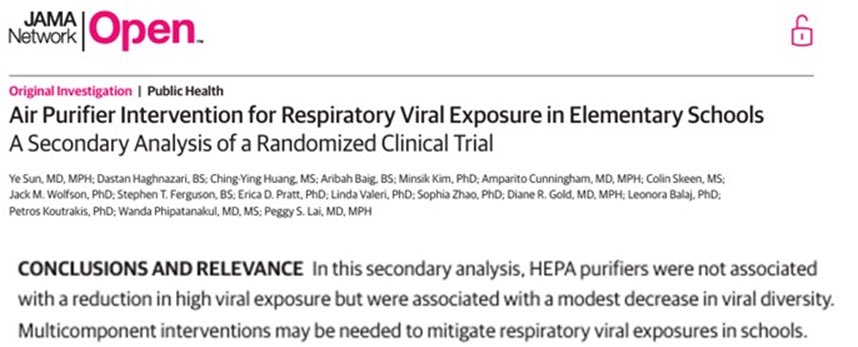Masks work.
Better masks work better.
Respirators work best.
2-way masking, with respirators, can stop transmission cold.
Better masks work better.
Respirators work best.
2-way masking, with respirators, can stop transmission cold.

To stop transmission we need to bring Rt <1.
Masks are one important way we can reduce Rt.
The type of mask & it's impact on Rt makes a big difference.
SARS2 has evolved to be much more transmissible so we need much better masks, aka respirators.
Masks are one important way we can reduce Rt.
The type of mask & it's impact on Rt makes a big difference.
SARS2 has evolved to be much more transmissible so we need much better masks, aka respirators.

It's pretty easy to see that 2-way masking is much more effective than 1-way masking.
It's also easy to see that 2-way respirators can easily bring Rt <1.
But that's just a model you say? How does that translate to the real world?
It's also easy to see that 2-way respirators can easily bring Rt <1.
But that's just a model you say? How does that translate to the real world?

Well, Flu has a low R0 so it's easy to see the impact of masking.
Take Japan for example, Flu was virtually eliminated.
Take Japan for example, Flu was virtually eliminated.

In the U.S., Flu also disappeared with masking, but of course it came back with the great unmasking of 2022. 

In Canada, masking recommendation was introduced in spring 2020 by the feds & the provinces mandated masks.
SARS2 Wild Type had a modest R0 ~ 2.3 to 3.4 so masks worked well.
Cases remained low, peaking at about 1,000 cases per day but generally measured in the 10s & 100s.
SARS2 Wild Type had a modest R0 ~ 2.3 to 3.4 so masks worked well.
Cases remained low, peaking at about 1,000 cases per day but generally measured in the 10s & 100s.

In year 2, more transmissible variants arrived but so did vaccines.
Masks & vaccines together with an R0 for Alpha, Beta, Delta ~ 5 to 8 kept daily cases in the low 1,000s, peaking at 10,000.
Masks & vaccines together with an R0 for Alpha, Beta, Delta ~ 5 to 8 kept daily cases in the low 1,000s, peaking at 10,000.

And then came the spectre of Omicron, a tsunami in the making.
The Feds recommended upgrading masks to respirators in December 2021.
Public respirator demand increased 10-fold in December / January.
The Feds recommended upgrading masks to respirators in December 2021.
Public respirator demand increased 10-fold in December / January.

When Omicron hit it blew right through cloth & surgical masks with an R0 > 12, peaking at 350,000 cases.
At the same time, an anti-govt, anti-vax, anti-mask, "FREEDOM" movement erupted.
And provinces dropped mask mandates.
At the same time, an anti-govt, anti-vax, anti-mask, "FREEDOM" movement erupted.
And provinces dropped mask mandates.

Since then daily cases have oscillated between 100,000 to 150,000 per day, something unfathomable in the beginning and largely unknown to the public today.
Officially we only report 1/50 to 1/100 the actual # of cases in Canada so how would the public know?
Officially we only report 1/50 to 1/100 the actual # of cases in Canada so how would the public know?

Unbridled transmission has led to the infection of 80% of the population in just one year.
And hyperendemicity.
And frequent re-infections.
And massive #'s of ppl with damaged immune systems.
And out-of-season diseases, multiple simultaneous diseases & severe disease cases.
And hyperendemicity.
And frequent re-infections.
And massive #'s of ppl with damaged immune systems.
And out-of-season diseases, multiple simultaneous diseases & severe disease cases.

Which has led to overrun hospitals & dying kids.
And half empty schools.
And massive #'s of ppl disabled with Long Covid.
And the highest death toll ever.
With no end in sight.
This is not sustainable.
#BringBackMasks
#WearARespirator
And half empty schools.
And massive #'s of ppl disabled with Long Covid.
And the highest death toll ever.
With no end in sight.
This is not sustainable.
#BringBackMasks
#WearARespirator
• • •
Missing some Tweet in this thread? You can try to
force a refresh













